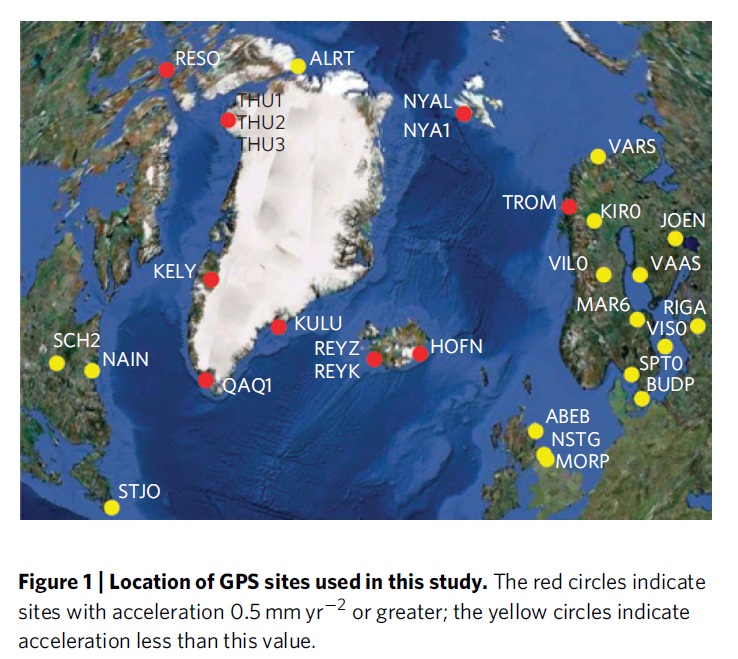Green Land and Rising Sea Levels
Vertical motions of the rocky margins of Greenland and
Antarctica respond to mass changes of their respective ice
sheets. However, these motions can be obscured by episodes
of glacial advance or retreat that occurred hundreds to
thousands of years ago 3–6, which triggers a delayed response
because of viscous flow in the underlying mantle.
Using present high-precision global positioning system (GPS)
data we can describe the vertical motion of the rocky margins
of Greenland, Iceland and Svalbard. One would focus on vertical
accelerations rather than velocities to avoid the confounding
effects of past events.
Data shows an acceleration of uplift over the past decade that represents an essentially
instantaneous, elastic response to the recent accelerated
melting of ice throughout the North Atlantic region.GPS data models for glacial isostatic
adjustment suggests that some parts of western coastal
Greenland were experiencing accelerated melting of coastal ice
by the late 1990s. Using simple elastic model, one can estimate
that western Greenland's ice loss is accelerating at an average
rate of 8.7±3.5 Gt yr, whereas the rate for southeastern
Greenland-based on limited data-falls at 12.5±5.5 Gt yr. Details are given in Jiang et al 2010 regarding the subject.

